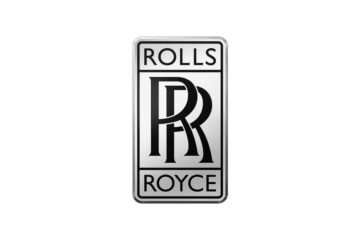Canon Inc. is a globally renowned Japanese multinational corporation specializing in imaging and optical products, including cameras, printers, medical imaging equipment, and industrial machinery. Founded in 1937 by Takeshi Mitarai, Goro Yoshida, Saburo Uchida, and Takeo Maeda, the company started as a small enterprise focused on camera development and later expanded into various technological sectors. Headquartered in Ota, Tokyo, Canon has grown into a leading name in photography, printing solutions, and medical imaging. Over the years, Canon has built a reputation for innovation, launching groundbreaking products such as the EOS camera system, Bubble Jet printers, and advanced mirrorless cameras. The company continues to invest in AI-driven imaging, sustainable solutions, and cutting-edge medical technologies, maintaining its position as a leader in the industry. Despite facing market challenges, Canon’s adaptability, research-driven approach, and commitment to quality have solidified its status as one of the most influential tech giants in the world.
Company Information
Company Name: Canon Inc.
Founder Name: Takeshi Mitarai, Goro Yoshida, Saburo Uchida, Takeo Maeda
Founded Year: 1937
Headquarters: Ota, Tokyo, Japan
Products:
- Digital cameras
- Printers (inkjet and laser)
- Photocopiers
- Scanners
- Medical imaging equipment
- Optical lenses
- Projectors
- Semiconductor lithography equipment
- Surveillance cameras
Services:
- Printing and document management solutions
- Imaging and optical services
- Professional and consumer photography solutions
- Medical imaging and healthcare solutions
- Industrial and commercial imaging services
Competitors:
- Nikon
- Sony
- Fujifilm
- Panasonic
- Xerox
- Ricoh
- Hewlett-Packard (HP)
- Epson
- Samsung
- Olympus
Company History & Growth
- Foundation and Early Years (1937-1949)
- Established as Precision Optical Industry Co., Ltd.
- Launched Japan’s first 35mm focal-plane shutter camera, “Kwanon.”
- Renamed Canon Inc. in 1947.
- Expansion and Innovation (1950-1979)
- Introduced Japan’s first X-ray camera (1958).
- Released the first Canon copier (1965), competing with Xerox.
- Entered the semiconductor industry with lithography equipment.
- Launched the AE-1 (1976), one of the first microprocessor-equipped cameras.
- Global Growth and Digital Era (1980-1999)
- Introduced the first autofocus camera (EOS series, 1987).
- Expanded operations in the U.S. and Europe.
- Developed bubble jet printer technology.
- Became a leader in digital imaging and printing.
- 21st Century Leadership (2000-Present)
- Introduced advanced mirrorless cameras.
- Expanded into medical imaging and AI-powered solutions.
- Acquired Toshiba Medical Systems (2016) and expanded in the healthcare industry.
- Continued leadership in photography, printing, and industrial imaging.
Challenges & Lessons
- Competition: Faced intense competition from Sony, Nikon, and emerging smartphone cameras.
- Market Shifts: Decline in compact digital camera sales due to smartphone dominance.
- Technological Adaptation: Transitioned to mirrorless cameras to stay relevant.
- Global Economic Challenges: Navigated recessions and supply chain issues.
- Lesson: Innovation, adaptability, and diversification are key to long-term success.
Innovations
- First Microprocessor-Controlled Camera (1976) – AE-1 revolutionized photography.
- EOS System (1987) – Introduced electronic autofocus and lens mount system.
- Bubble Jet Printing Technology (1985) – Transformed inkjet printing.
- Dual Pixel Autofocus (2013) – Set a new standard in camera focusing.
- Mirrorless Camera Advancements (2018-Present) – Competing in the growing market.
- Medical Imaging Breakthroughs – AI-driven diagnostics and imaging solutions.
Achievements or Milestones
- World’s First Camera with Built-in Microprocessor (1976)
- EOS Camera System Launch (1987) – Revolutionized DSLR technology.
- Global Market Leader in Camera Sales (2000s)
- Acquisition of Toshiba Medical Systems (2016)
- Top Printer Manufacturer (Ongoing) – Leading in inkjet and laser printing.
Recognitions & Awards
- Ranked Among Fortune Global 500
- Multiple Design Awards for Imaging Products
- Red Dot and IF Design Awards for Printers and Cameras
- Environmental Sustainability Recognitions
- Innovation Awards in Medical Imaging Technology
Recap of the Company’s Success Story
Canon’s journey from a small Japanese startup to a global imaging and optical leader is a testament to its commitment to innovation and quality. Founded in 1937, Canon started with cameras but quickly diversified into printing, imaging, and medical technologies. By continuously evolving, the company has remained a dominant force in various industries. Canon’s resilience against market shifts, economic challenges, and fierce competition has been crucial to its success. From launching the world’s first microprocessor-equipped camera to pioneering medical imaging technologies, Canon has consistently pushed technological boundaries. Today, it remains a global leader in imaging, printing, and industrial solutions, maintaining its status as a symbol of innovation and excellence.
What Entrepreneurs Can Learn from This Company’s Success Story
- Innovation is Key: Canon consistently embraced new technology to stay ahead of the competition.
- Diversification Reduces Risk: Moving beyond cameras into printing, medical imaging, and industrial solutions helped Canon remain relevant.
- Adaptability Ensures Longevity: The shift from DSLRs to mirrorless cameras and AI-powered imaging proves the importance of adapting to market changes.
- Brand Reputation Matters: Canon’s emphasis on quality and reliability helped build strong customer loyalty worldwide.
- Sustainability is the Future: By focusing on eco-friendly solutions and sustainable business practices, Canon ensures long-term growth.
Entrepreneurs can take inspiration from Canon’s strategic vision, commitment to research and development, and ability to evolve with market trends. Whether in technology, branding, or diversification, Canon’s journey highlights key principles for building a resilient and innovative business.



